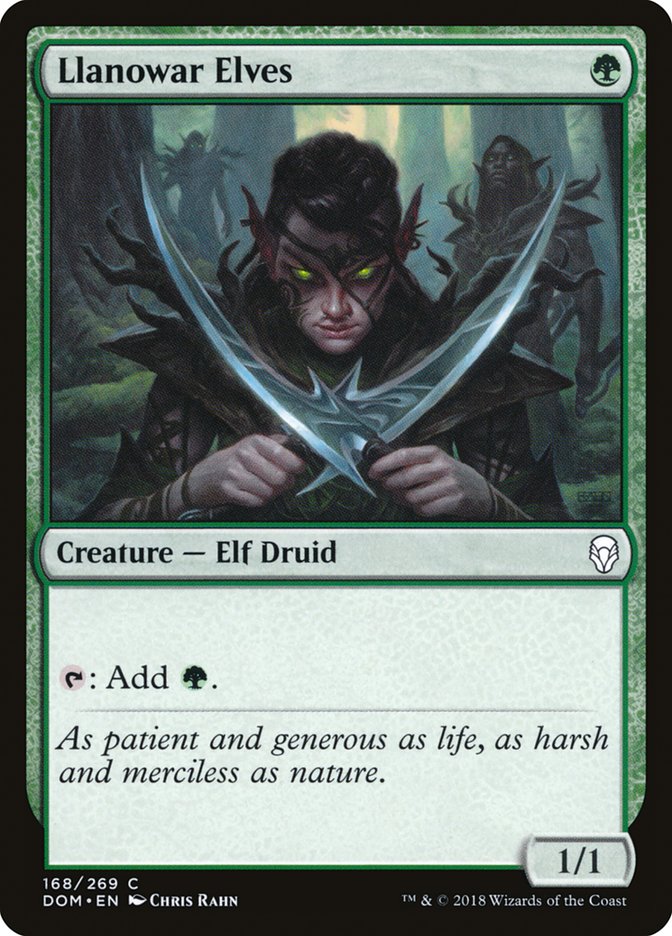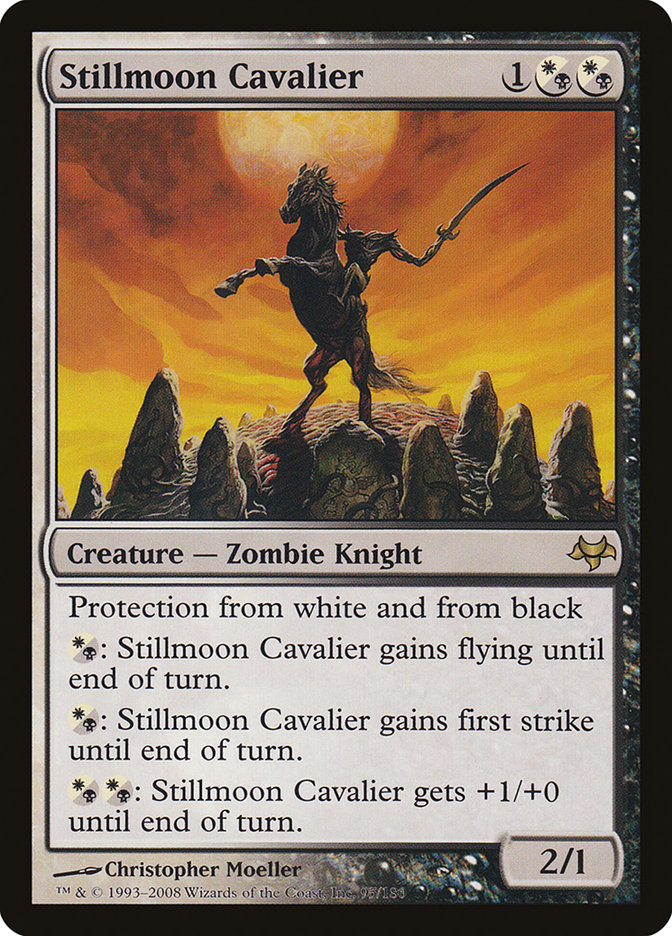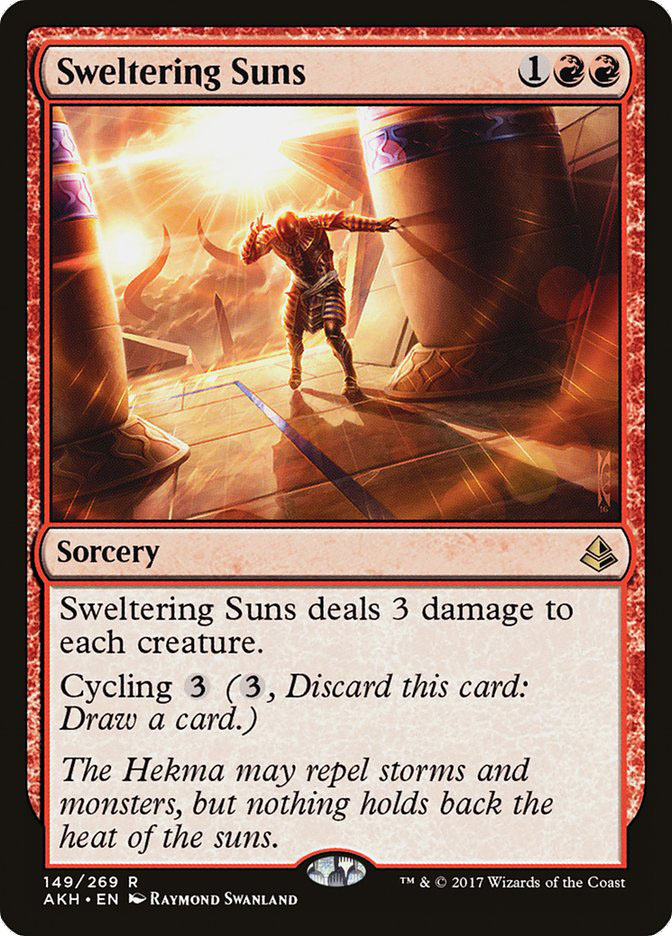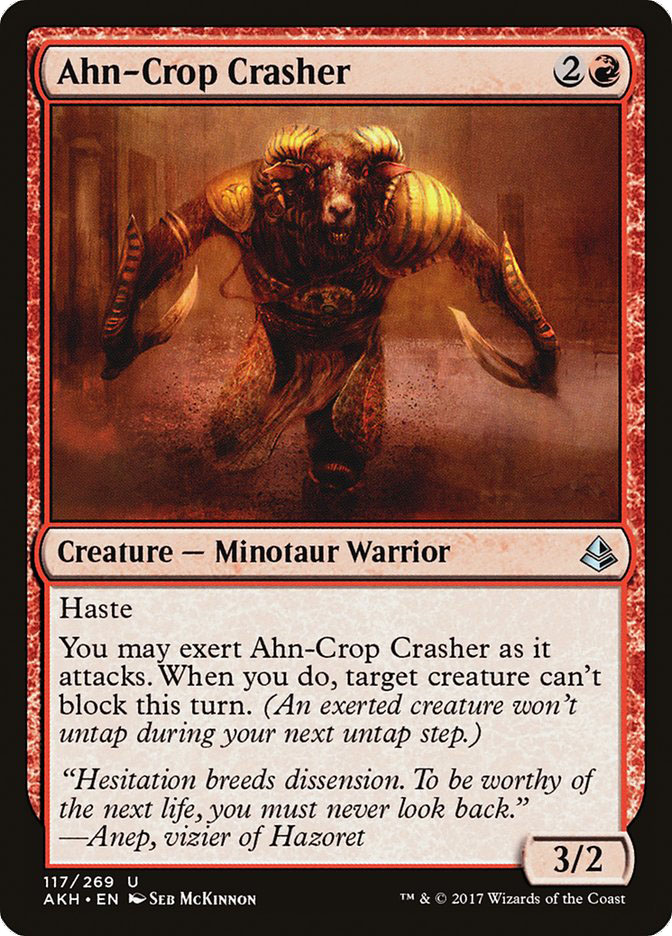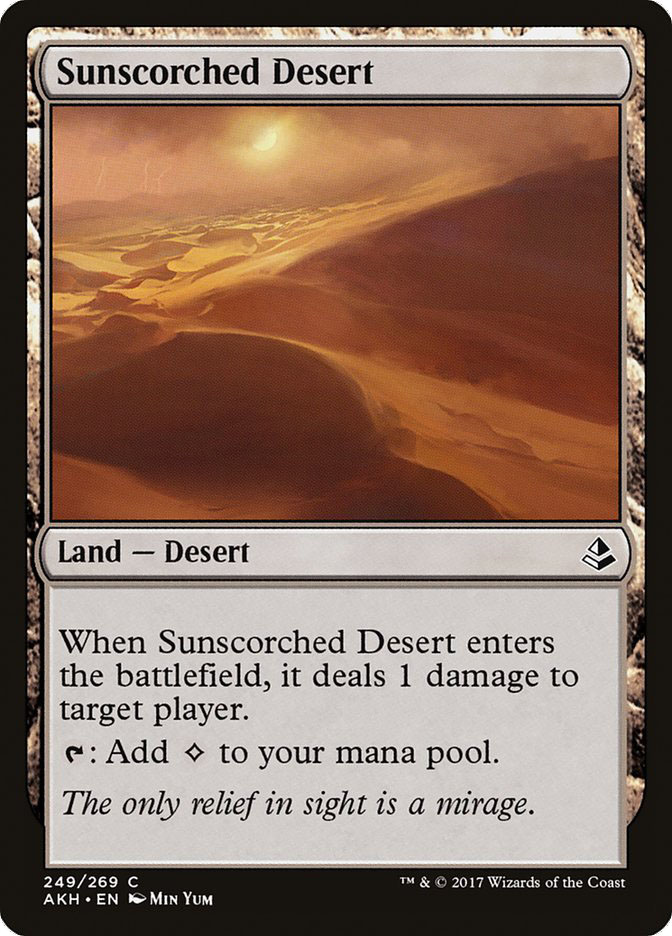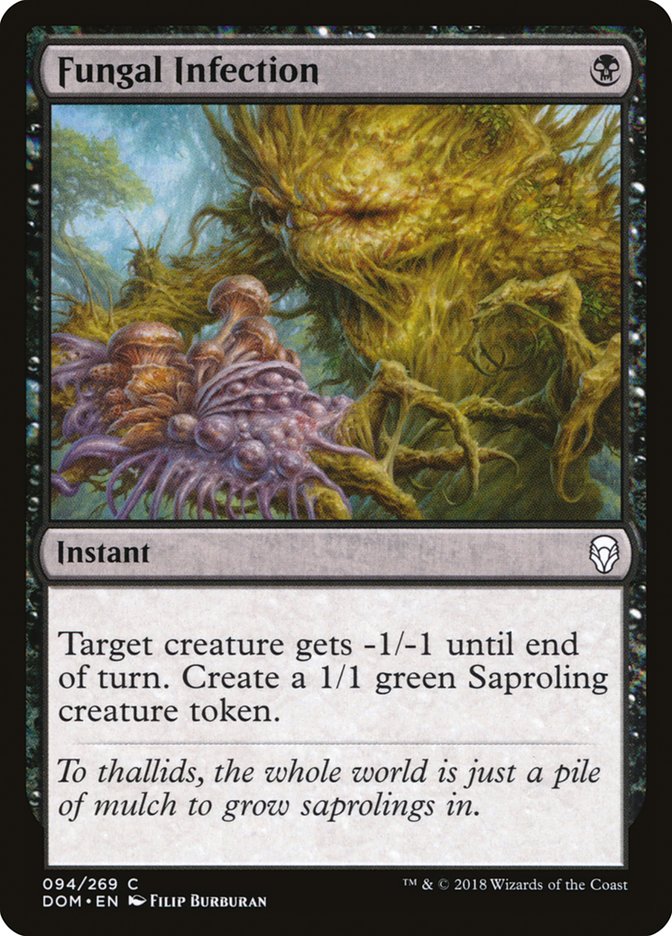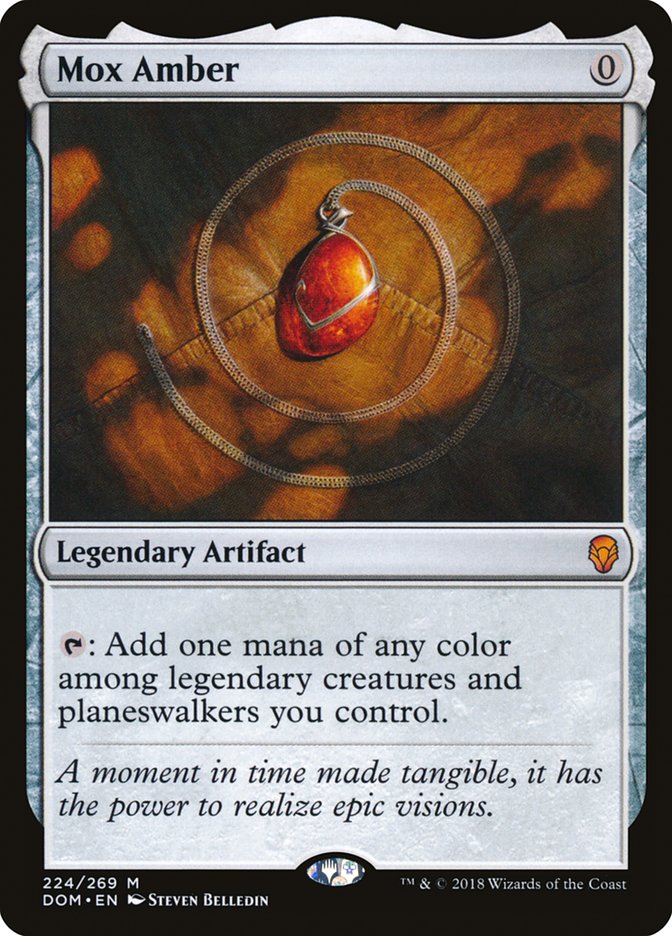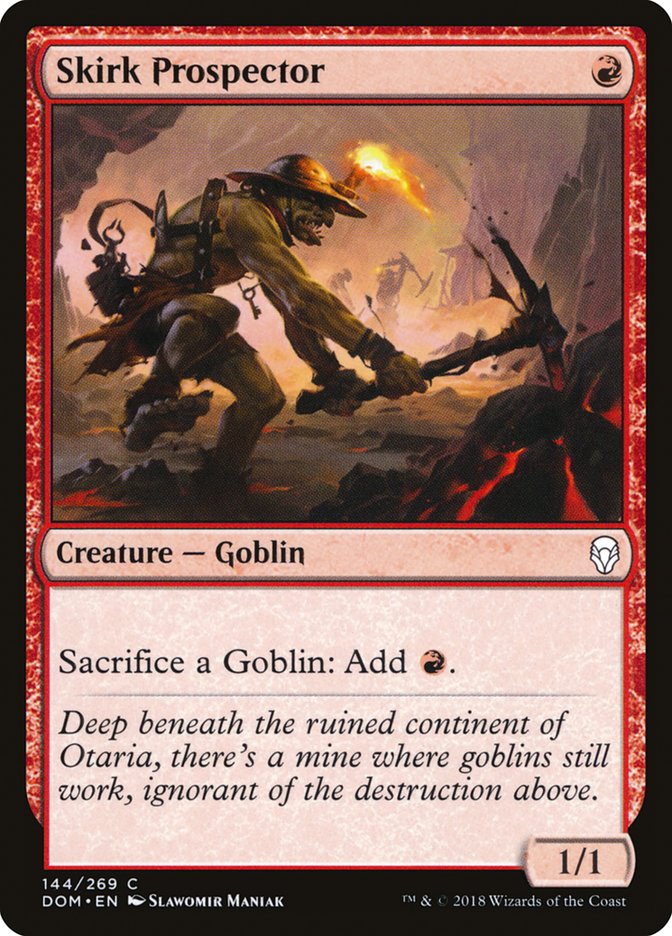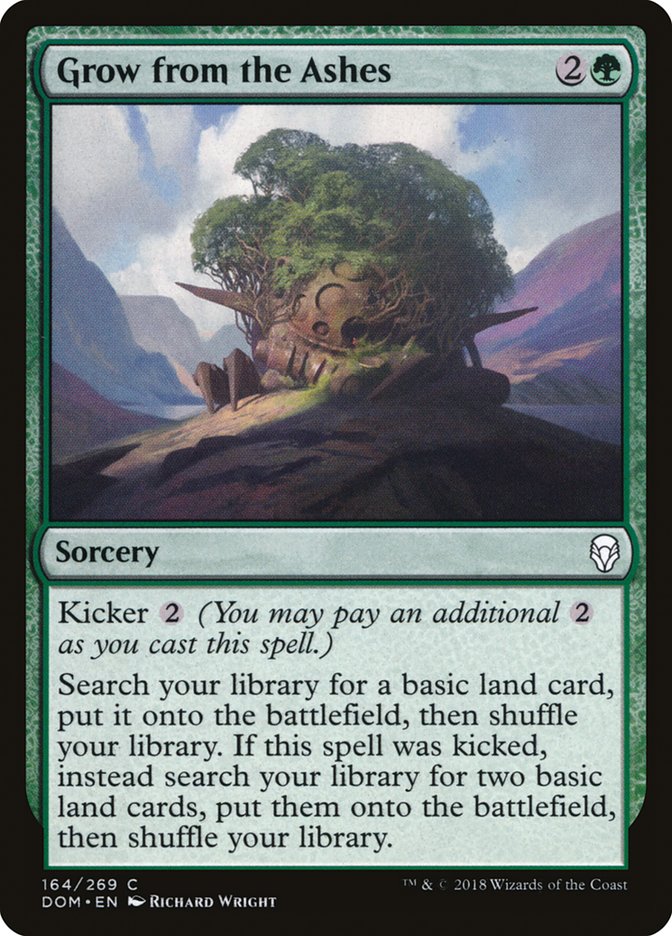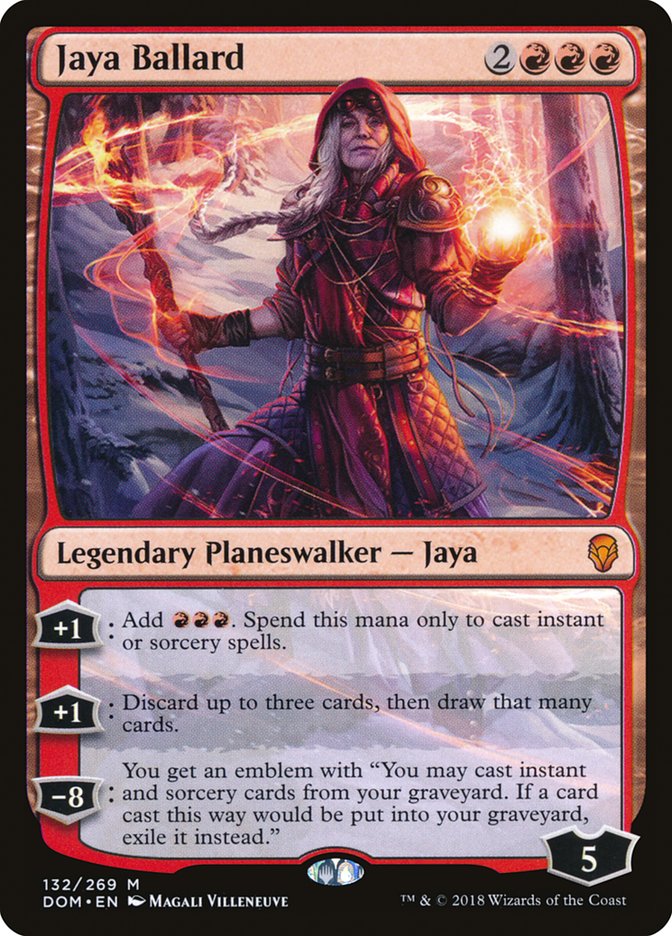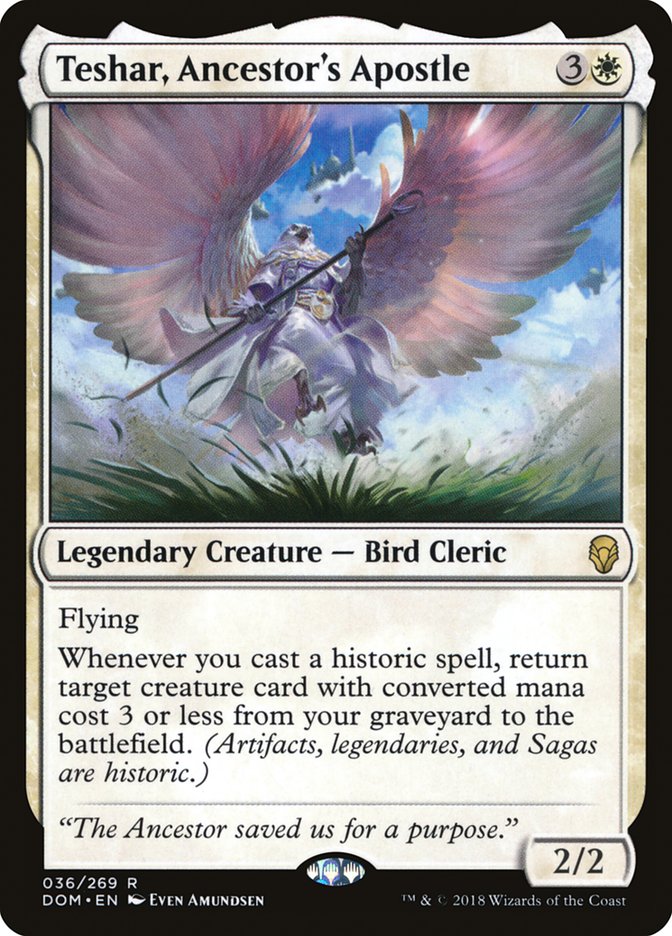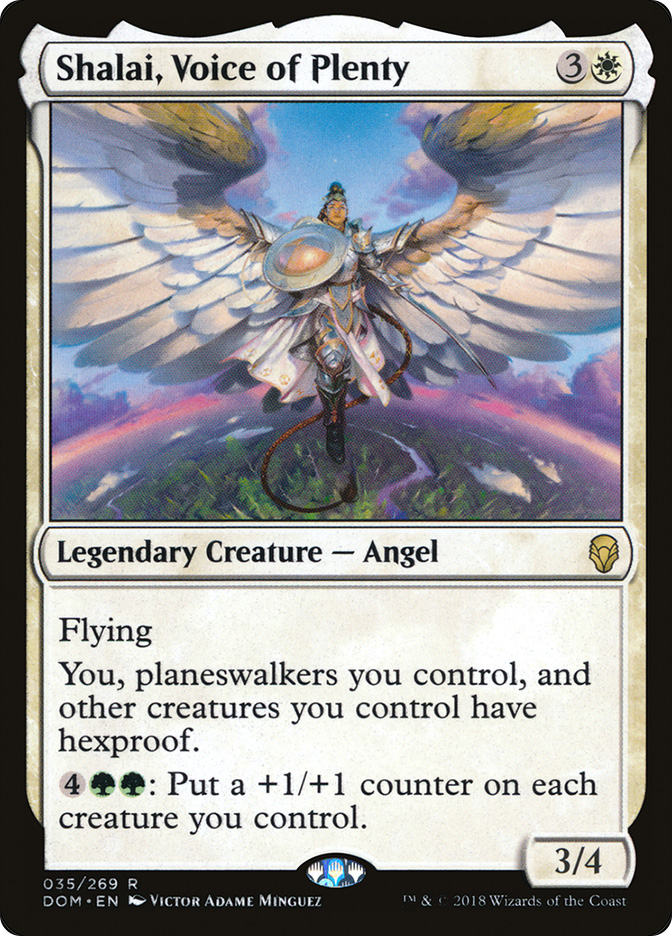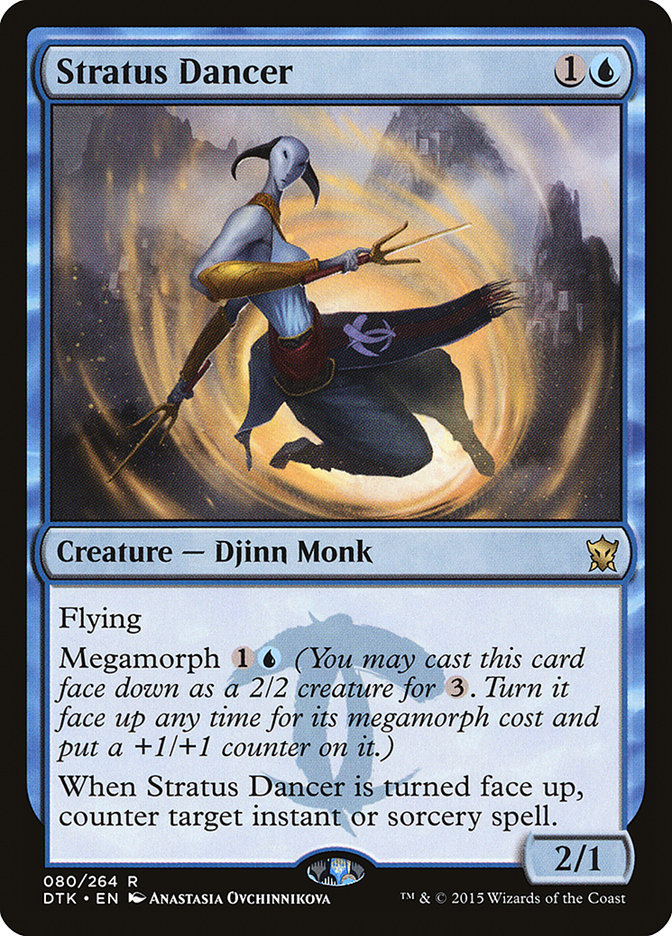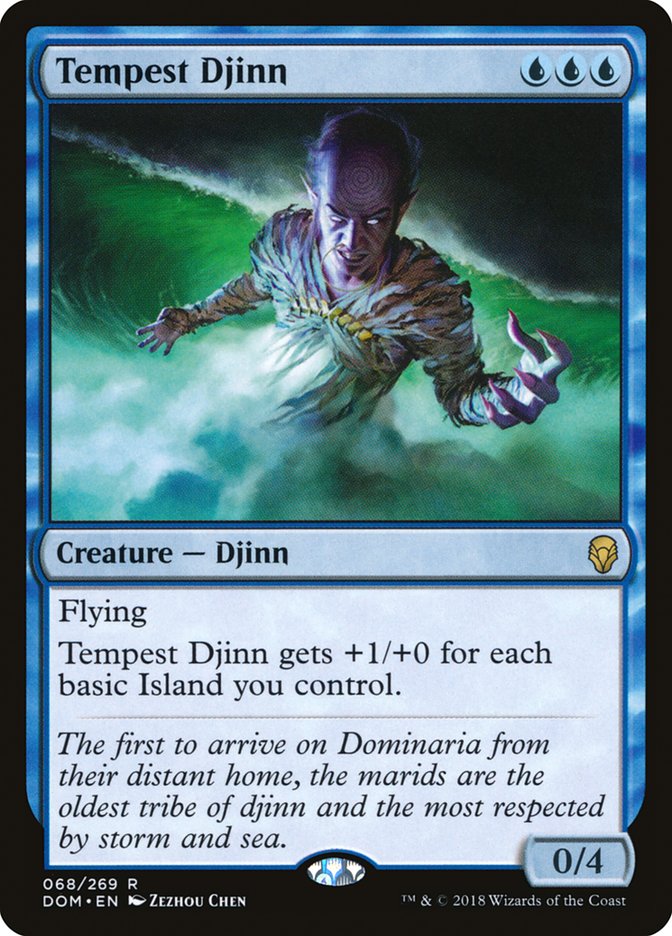It’s release weekend for Dominaria and that means StarCityGames.com is once again rolling out the red carpet for what should be an exciting Team Constructed Open with a set that could make an early impact on all three Constructed formats. The hype for this set is larger than almost any in recent memory (maybe Return to Ravnica was higher?) and all the stars will come out to this one to see who walks away with the coveted trophies.
Of course I’ll be in Atlanta giving you all a firsthand look at what’s going on at this quarter’s awards, but as always, I’ll predict the winner in each category. Without further ado, here are my picks for this weekend.
LeBron James Award for the great card whose talents are most likely to be wasted on a bad deck: Llanowar Elves
I’m sure Cedric Phillips has already made peace with the fact that this year’s Cleveland Cavaliers team is trash and it will take a herculean effort from LeBron to carry them to the finals like in 2007, but I’m not going to miss an opportunity to publicly dagger him about it.
Magic has a long history of cards lacking a good home, or waiting for players to figure out how to utilize a card properly when the obvious home proves lacking (i.e. Jeskai Saheeli before Four-Color). For the early weeks of this Standard format, I think that card is Llanowar Elves.
Perhaps the most anticipated reprint in Dominaria, Llanowar Elves is making its return to Standard and there is no shortage of decks that it can immediately slot into. I’ve seen it in Winding Constrictor decks, Mono-Green Aggro decks, and G/R Monsters decks, but there are issues I see with all of these.
For the Sultai Constrictor deck, I like how you have access to both green fastlands, so it’s easy to include enough Turn 1 green sources to reliably cast Llanowar Elves, but I don’t see the card fitting well into the strategy of the deck. The deck’s curve is fairly condensed now between two and four, so there’s little payoff for ramping past Turn 2 or 3, and there isn’t a lot of optionality in deckbuilding because the cards are mainly chosen for their energy and +1/+1 counter synergies.
Furthermore, the deck likes to transition after sideboarding into more of a midrange deck where Llanowar Elves is further out of place. Maybe the power of Llanowar Elves is so great that it can displace Servant of the Conduit, but even if that’s the case, the deck isn’t maximizing what Llanowar Elves can do. Jadine Klomparens elaborates on this in her article today.
For Mono-Green Aggro, I think the deck is simply underpowered. When you curve out it can look great, but the cheap removal in Standard right now is excellent, so your opponent will often stay with you up the curve, at which point you’re left casting Merfolk Branchwalker and Jadelight Ranger, two cards that I was high on when released that I’m now quite low on. The explore mechanic isn’t powerful enough to make them good standalone cards, so they really only shine in combination with eternalize and other graveyard synergies, and I don’t want to play Earthshaker Khenra in my Llanowar Elves deck.
For the G/R Monsters decks, I think the problem is mana. Both Gruul multicolor lands enter the battlefield tapped, so in order to have a manabase that can consistently cast Llanowar Elves you need a lot of Forests, meaning double-red cards like Rekindling Phoenix and Glorybringer are a huge strain.
To maximize the power of Llanowar Elves, I want to satisfy the following conditions:
1. Ramp into threats that end the game quickly.
2. Have some high-end threats and mana sinks to mitigate flooding.
3. Have a secondary ramp card to enable “five-drop on Turn 3” draws and recover from a killed Elf.
4. Have at least twelve Turn 1 green sources.
Building with these in mind, I came up with the following:
Creatures (23)
- 4 Llanowar Elves
- 1 Rhonas the Indomitable
- 4 Carnage Tyrant
- 4 Regisaur Alpha
- 1 Drover of the Mighty
- 2 Deathgorge Scavenger
- 2 Ghalta, Primal Hunger
- 3 Thrashing Brontodon
- 2 Territorial Allosaurus
Lands (22)
Spells (15)

This deck is nearly mono-green, splashing just for Regisaur Alpha and sideboard cards. With your ramp cards, the deck still has fifteen red sources, a healthy number that could potentially support some double-red cards, but I’d prefer to be conservative, especially given the power of the threats already in the deck.
The one-two punch of Regisaur Alpha and Carnage Tyrant / Ghalta, Primal Hunger is great at ending the game and is generally resilient to removal. Territorial Allosaurus gives the deck a fine bridge threat that also serves as a great mana sink later in the game, a clear upgrade to Ripjaw Raptor.
I went with Thunderherd Migration as the secondary ramp card, since it’s invulnerable to removal and there is a high enough density of Dinosaurs to make it work. It’s weird to have Llanowar Elves and Rampant Growth in the same deck, but in reality they’re both enablers to make the high-end threats work, so it should be fine in practice.
The real sacrifice comes in the sideboard, when you lose access to things like Sweltering Suns and Chandra, Torch of Defiance, but with four maindeck copies of Carnage Tyrant, this deck’s control matchup should be great. You could struggle against aggro, which is why I included extra copies of Deathgorge Scavenger as lifegain, but Regisaur Alpha helps you turn the corner well. The extra Ghalta and the singleton Limits of Solidarity are there for Ghalta mirrors, where that card will likely dominate the battlefield in every game its cast.
Llanowar Elves may be an exceptionally strong card, but you still have to work to maximize its strengths. Do so and you’ll be rewarded. Fail to do so and you’ll be writing bitter letters when your star player leaves for Miami, Los Angeles, or Philadelphia.
Ancestral Recall Award for the card that is much better than the rest of the cards in a cycle: Goblin Chainwhirler
Dark Ritual and Lightning Bolt are iconic cards and great in their own right, but Ancestral Recall was simply on another level. I’m pretty high on most of the triple-color three-drops in Dominaria (save Dread Shade) but Goblin Chainwhirler is something else.
First, Mono-Red is already a great deck. It’s not always that monocolored decks have enough power to compete and that’s the primary determinant in which of these cards see play and which do not. Chainwhirler has a great home waiting for it already and plays well in that deck.
It took a while for Rampaging Ferocidon to supplant Ahn-Crop Crasher, but the ability to shut down token decks and lifegain, which were the primary ways people were fighting Ahn-Crop Crasher and Hazoret the Fervent, eventually got the card banned. Goblin Chainwhirler isn’t on that level, but it creates a similar squeeze when split with Ahn-Crop Crasher, forcing the opponent to pick their lane and hope you draw the half of your deck they are prepared for.
On top of that, Chainwhirler should finally put an end to players putting bad colorless lands into their red decks, saving them from their Sunscorched Desert– and Grasping Dunes-loving selves. It should also bring about a return of Soul-Scar Mage, a card which Goblin Chainwhirler synergizes quite nicely with by making it relevant even against larger creatures.
There are many one-toughness creatures in Standard right now, from Llanowar Elves to Glint-Sleeve Siphoner to the plethora of token makers. I expect for players relying on too many of those creatures to find themselves in for a rude awakening, getting blown out by people who simply found room for a playset of a great card in their already great deck.
The metagame may evolve to the point where Chainwhirler becomes bad, opening windows for those decks, but that process will take time, if it happens at all. Do not bring a deck that folds to this card this weekend.
Robert Horry Award for best new sideboard card: Fungal Infection
I had largely overlooked this card until recently, and after considering it more closely, I think it has a lot of potential as a sideboard card to combat the same things Goblin Chainwhirler does, but out of decks like Sultai Constrictor.
Obviously killing a Llanowar Elves or Bomat Courier on Turn 1 is great, but the extra 1/1 trades for their next creature as well or simply gets in some free damage to later be pumped by Verdurous Gearhulk or Hadana’s Climb. The card will trade cleanly with Servo Exhibition or Saporling Migration, so it should be relevant against nearly every aggro deck in the metagame.
But there’s one part of the card that I think puts it over the top due to versatility, and that is the ability to trade with two-toughness creatures. Against Ahn-Crop Crasher, you can cast it mid-combat and trade for the three-drop cleanly. Similarly, it will trade for Merfolk Branchwalkers and Jadelight Rangers quite often.
The presence of Fatal Push will limit the numbers of this card seeing play, but the first copy or two will be a great role-player, just like Big Shot Rob.
Bitcoin Award for high risk/high reward card that instantly makes anyone rewarded by it insufferable: Mox Amber
I’ve played a bit with Mox Amber in both Standard and Modern and the results have been…inconsistent. When the card works, it’s a Mox and everything is great, but the condition on it is significant, leading to the card rotting in your hand some portion of the time.
I’ve been happier with the card in Modern where there are cheaper legendary creatures to use with it, even taking the Aggro Taxes list I wrote about here to a 5-0 finish in a League. Turn 1 Kytheon, Hero of Akros plus Thalia, Guardian of Thraben is the stuff Wescoe dreams are made of.
If you’re packing Mox Amber this weekend, don’t expect a middling finish. If your deck works well it will be great, but if not it will be embarrassing. The only certainty is that whoever lands on the right side of that dichotomy is going to talk nonstop about how smart they are and how everyone should have bought into Mox Ambers when they were only $20.
The John Travolta Award for an unexpected career revival: Skirk Prospector
Dominaria is bringing back a lot of old cards, but this one surprised me because I know Wizards of the Coast is wary of printing cards that produce easy mana and cheap, efficient sacrifice outlets. Skirk Prospector is a deceptively powerful card that should see play in Modern once we figure out exactly what to do with it.
Sam Black had some great ideas about it if you want to get aggressive. Mono-Red Goblins is already a fringe deck in Modern, so I wouldn’t be surprised if Skirk Prospector puts it over the top.
Also, noted Goblins expert Jim Davis has been working on a revival of the puzzlingly named Dirty Kitty archetype, an old Extended deck featuring Skirk Prospector, Fecundity, and Empty the Warrens. His thoughts can be read here, and some playtesting with various lists can be found here and here.
I know they say that creatures have gotten more powerful over the years, but there are still some gems lurking with the original card face and Skirk Prospector is one of them. He lost his Legacy job long ago, but he’s coming out of retirement to wreak havoc on Modern.
Thraben Inspector Award for most overlooked common that becomes a format staple: Grow from the Ashes
I, like many others, overlooked the fact that Grow from the Ashes puts the lands you find with it on the battlefield untapped, a significant gain for a card that is already intriguing for ramp decks. Ramp decks these days curve 3-5-X, and having a ramp spell that can fill either of the first two slots goes a long way toward adding some much-needed consistency to those decks.
Putting the lands onto the battlefield untapped allows you to double-spell with cheap removal, keeping the battlefield clear until you’re ready to slam a giant threat that dominates the game.
We haven’t seen a ramp deck in Standard for a while now, but I think there’s a critical mass of good ramp spells and powerful threats to ramp into. How to best put the pieces together is unclear, but Grow from the Ashes is going to be in all of them. Respect this card.
Rodney Dangerfield Award for planeswalker getting no respect: Jaya Ballard
Karn, Scion of Urza is among the most-hyped cards in the set. Teferi, Hero of Dominaria recently drew praise from one of the best players in the world and slots easily into U/W Approach decks.
As a result, Jaya Ballard has been largely ignored despite being quite powerful. The rummaging ability has the potential to completely reshape your hand, and the mana ability, while restricted, can enable some very powerful spells from Dominaria, namely Fight with Fire and Jaya’s Immolating Inferno. With lots of mana, these are game-changing effects, and Jaya both digs for them and provides the mana to make them that powerful.
At the very least, Jaya has so much loyalty and the quality of red removal in the format is so high that her mana ability will lead to you clearing the battlefield and keeping her alive. Midrange red decks have a long history in Magic and I see the potential for one here:
Creatures (13)
Planeswalkers (8)
Lands (25)
Spells (14)

The notable hole in this deck is answering Hazoret the Fervent and The Scarab God, hence the splash for Hour of Glory. I also like Duress a lot against Approach decks, but I don’t think you need to go any further.
Mostly this deck is going to crush creature decks, which are always popular in the early weeks of a new format. The removal is great and Goblin Chainwhirler stops anyone from going wide. The volume of planeswalkers and Treasure Map provide enough card advantage to compete with other midrange decks, although the deck may be too threat-light.
The lack of Glorybringer and Rekindling Phoenix is strange and some of the new cards may prove to be worse than that proven pair, but for now I’m siding with new cards so I have enough legendary creatures to enable the Legendary Sorcery, which I could easily add a second copy of if it proves powerful enough.
Also, Karn, Scion of Urza is a threat in this deck, since you make a pile of Treasures that can pump the Construct token it makes. Also, the amount of burn from your big spells lets you close games even after dealing little damage early.
With red decks being so heavy on aggression for so long, it’s easy to overlook a deck like this, but Hazoret decks already look to sideboard into a midrange plan often and the quality of the removal is really high.
Milli Vanilli Award for a duo of cards that will prove to be phony: Teshar, Ancestor’s Apostle and Shalai, Voice of Plenty
I don’t really understand the appeal of either of these cards. There’s lots of shiny text on them that sounds great and all, but beneath the surface, I don’t think there’s any staying power. Shalai, Voice of Plenty’s stats are okay, but they don’t match up well against Rekindling Phoenix or Glorybringer and there are several good red removal spells that answer it, though surviving Abrade is nice.
Yeah, it’s great in the late-game as a mana sink, but I don’t think the decks it will go in will want to find themselves in that situation that often. Maybe I’m underrating the hexproof ability turning it into a pseudo-Flagbearer, but if that’s the best part of a four-mana 3/4 flyer, I’m not that excited.
As for Teshar, Ancestor’s Apostle, it plays nicely with Mox Amber, but a lot needs to go right for this card to gain significant value and the body is fragile enough that it’s going to die a lot. Every removal spell in Standard save Cast Down and essentially every removal spell in Modern answers it cleanly, and usually for less than four mana.
I like me a wacky creature combo deck, but at a certain point you’re putting in too much effort. Standard isn’t about grinding small value but landing game-winning threats or running your opponent over, and there are more powerful things to be doing in Modern that don’t require as much work.
There are always cards that read as more powerful than they actually are, much to the dismay of their early supporters, but if you really think about what it takes for these two to be good, then girl you know it’s true: they aren’t up to par.
The Stratus Dancer Award for aggressive blue creature I hope to get to cast in Standard: Tempest Djinn
There’s something about blue aggro decks that I always love. Maybe it’s the amount of matches I won with U/W Delver and Mono-Blue Devotion, but having the ability to back up your creatures with counterspells offers a feeling of invincibility that is utterly intoxicating. However, they need a lot of pieces to work appropriately, so it’s rare that they come together.
Tempest Djinn does a couple of things that I think make it a worthy build-around. First, it’s incredibly powerful. If you have only Islands in your deck, then it’s a minimum 3/4 flyer for three, already better than Shalai. It scales well into the late-game and it’s cheap enough that you can wait to cast it with mana up to protect it.
But most importantly, the card is powerful enough that you don’t need to support it with a ton of cheap creatures. My first pass with Tempest Djinn was to put it in a Favorable Winds deck, since there is a high number of reasonable fliers in blue, but that deck was super-low-curve and didn’t maximize its best threat because it didn’t want to play more than three or four lands in a game. I think Tempest Djinn will be best in a bigger blue deck where it can do most of the heavy lifting.
Todd Anderson sketched out a list of what that might look like, though I think he went too far to the control end of the spectrum. Some additional threats like Nimble Obstructionist, which plays well with counterspells and gives you a great answer to Gate to the Afterlife, would be needed so that you can produce a significant clock with some consistency.
Over the years, after getting overly excited about blue aggro creatures only to have my hopes dashed, I’ve become more realistic about these decks coming together, but that’s not going to stop me from trying.
***
That concludes your Dominaria Release Weekend Awards Preview Show. Be sure to tune into all the action this weekend to see just how wrong I am about absolutely everything.


